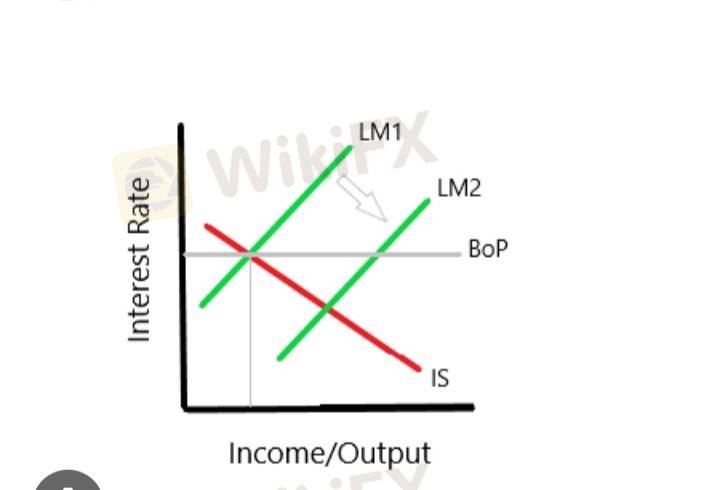
2025-02-14 20:51
IndustryEconomic Models: Strengths and Weaknesses
#firstdealofthenewyearastylz
Economic models are simplified representations of economic systems, used to analyze and predict economic behavior. Here are some common economic models, their strengths, and weaknesses:
1. Classical Model
- *Assumptions:* Flexible prices and wages, full employment, and no government intervention.
- *Strengths:* Simple and intuitive, assumes efficient markets.
- *Weaknesses:* Ignores market failures, doesn't account for unemployment.
2. Keynesian Model
- *Assumptions:* Sticky prices and wages, government intervention, and aggregate demand drives economic activity.
- *Strengths:* Explains economic fluctuations, emphasizes role of government.
- *Weaknesses:* Overly relies on government intervention, neglects supply-side factors.
3. Monetarist Model
- *Assumptions:* Money supply drives economic activity, and markets are efficient.
- *Strengths:* Emphasizes role of monetary policy, simple and easy to understand.
- *Weaknesses:* Overlooks fiscal policy, neglects non-monetary factors.
4. Marxist Model
- *Assumptions:* Class struggle, exploitation, and the labor theory of value.
- *Strengths:* Highlights income inequality, emphasizes social and institutional factors.
- *Weaknesses:* Overly simplistic, neglects individual incentives and market mechanisms.
5. Neoclassical Model
- *Assumptions:* Rational behavior, efficient markets, and optimal resource allocation.
- *Strengths:* Provides microfoundations for macroeconomics, emphasizes individual incentives.
- *Weaknesses:* Overly relies on assumptions of rationality, neglects institutional and social factors.
6. Institutional Model
- *Assumptions:* Economic activity influenced by social and institutional factors.
- *Strengths:* Highlights the role of institutions, emphasizes social and cultural context.
- *Weaknesses:* Difficult to formalize, neglects individual incentives and market mechanisms.
7. Behavioral Model
- *Assumptions:* Humans exhibit bounded rationality, and psychological factors influence economic decisions.
- *Strengths:* Provides a more realistic representation of human behavior, emphasizes the role of psychology.
- *Weaknesses:* Difficult to formalize, neglects institutional and social factors.
Each economic model has its strengths and weaknesses, and economists often combine elements from multiple models to better understand complex economic phenomena.
Like 0
FX4036555298
Trader
Hot content
Industry
Event-A comment a day,Keep rewards worthy up to$27
Industry
Nigeria Event Giveaway-Win₦5000 Mobilephone Credit
Industry
Nigeria Event Giveaway-Win ₦2500 MobilePhoneCredit
Industry
South Africa Event-Come&Win 240ZAR Phone Credit
Industry
Nigeria Event-Discuss Forex&Win2500NGN PhoneCredit
Industry
[Nigeria Event]Discuss&win 2500 Naira Phone Credit
Forum category

Platform

Exhibition

Agent

Recruitment

EA

Industry

Market

Index
Economic Models: Strengths and Weaknesses
 Hong Kong | 2025-02-14 20:51
Hong Kong | 2025-02-14 20:51#firstdealofthenewyearastylz
Economic models are simplified representations of economic systems, used to analyze and predict economic behavior. Here are some common economic models, their strengths, and weaknesses:
1. Classical Model
- *Assumptions:* Flexible prices and wages, full employment, and no government intervention.
- *Strengths:* Simple and intuitive, assumes efficient markets.
- *Weaknesses:* Ignores market failures, doesn't account for unemployment.
2. Keynesian Model
- *Assumptions:* Sticky prices and wages, government intervention, and aggregate demand drives economic activity.
- *Strengths:* Explains economic fluctuations, emphasizes role of government.
- *Weaknesses:* Overly relies on government intervention, neglects supply-side factors.
3. Monetarist Model
- *Assumptions:* Money supply drives economic activity, and markets are efficient.
- *Strengths:* Emphasizes role of monetary policy, simple and easy to understand.
- *Weaknesses:* Overlooks fiscal policy, neglects non-monetary factors.
4. Marxist Model
- *Assumptions:* Class struggle, exploitation, and the labor theory of value.
- *Strengths:* Highlights income inequality, emphasizes social and institutional factors.
- *Weaknesses:* Overly simplistic, neglects individual incentives and market mechanisms.
5. Neoclassical Model
- *Assumptions:* Rational behavior, efficient markets, and optimal resource allocation.
- *Strengths:* Provides microfoundations for macroeconomics, emphasizes individual incentives.
- *Weaknesses:* Overly relies on assumptions of rationality, neglects institutional and social factors.
6. Institutional Model
- *Assumptions:* Economic activity influenced by social and institutional factors.
- *Strengths:* Highlights the role of institutions, emphasizes social and cultural context.
- *Weaknesses:* Difficult to formalize, neglects individual incentives and market mechanisms.
7. Behavioral Model
- *Assumptions:* Humans exhibit bounded rationality, and psychological factors influence economic decisions.
- *Strengths:* Provides a more realistic representation of human behavior, emphasizes the role of psychology.
- *Weaknesses:* Difficult to formalize, neglects institutional and social factors.
Each economic model has its strengths and weaknesses, and economists often combine elements from multiple models to better understand complex economic phenomena.
Like 0
I want to comment, too
Submit
0Comments

There is no comment yet. Make the first one.

Submit
There is no comment yet. Make the first one.